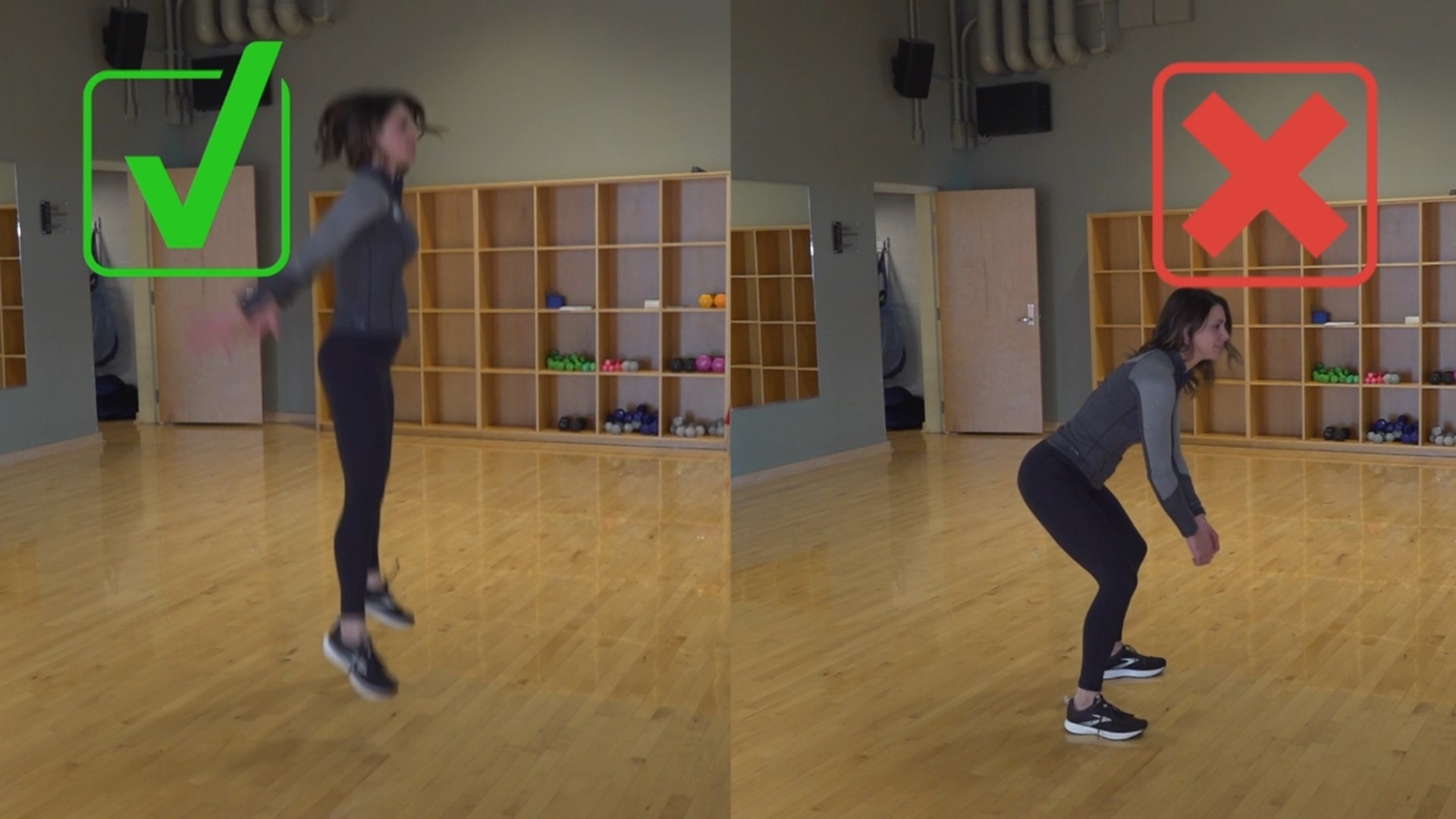YORK COUNTY, Pa. — Ever feel a little intimidated trying out plyometric moves like the jump squat or burpee? Well, there are many ways to work them into an exercise routine doable for all fitness levels!
"People automatically think that they can't jump, because of their knees, because of their hips, because of the depth and range of motion, when in reality if you land correctly, almost anybody can do a plyometric move," said Jen Winter, fitness director at the York Jewish Community Center.
Plyometric moves, done correctly, can be added to any circuit to boost cardio and increase heart rate during a workout. It can also be utilized during high-intensity interval training, alongside other moves or sprint/running work as well.
"I encourage you to have the right form in a squat, which is really important, then the next step is to actually add the jump," said Winter.
What is nice about the move is the fact that the depth doesn't need to be as drastic, as one would see in a regular squat. It can also be performed on the floor, at home, or at the gym, since no extra weight or equipment is needed.
"Your set up is going to be feet right outside your hips, [and] chest is up. You're going to squat down, [this is where] you are getting ready for the speed and that's where you jump. It's in the landing, you want to land with soft knees, not abrupt knees," said Winter.
There are several benefits to the jump squat. The participant will see a change in their respiratory strength and their muscle strength.
"You are going to see the power in your quads, hamstrings, calf muscles, and even ankle mobility ankle strength," said Winter.
With that being said, it is great for athletes training for an upcoming sports season. Winter says that plyometric moves like the jump squat can benefit athletes because it helps with darting movements or jolts of energy when on the field, court, or track.
If the participant is ready to advance the skill, Winter recommends adding height to the jump squat.
Continuing to add 6" every time can lead to higher jumps, and stronger leg muscles to achieve that higher altitude.
Also, when it comes to repetitions, if you are a beginner initially try ten reps, three rounds through, but feel free to add on more as you advance!
Give the move a try and let us know how you did! Feel free to also send us any fitness questions you may have through email at adebicki@fox43.com and on social media here.
You just got better!

